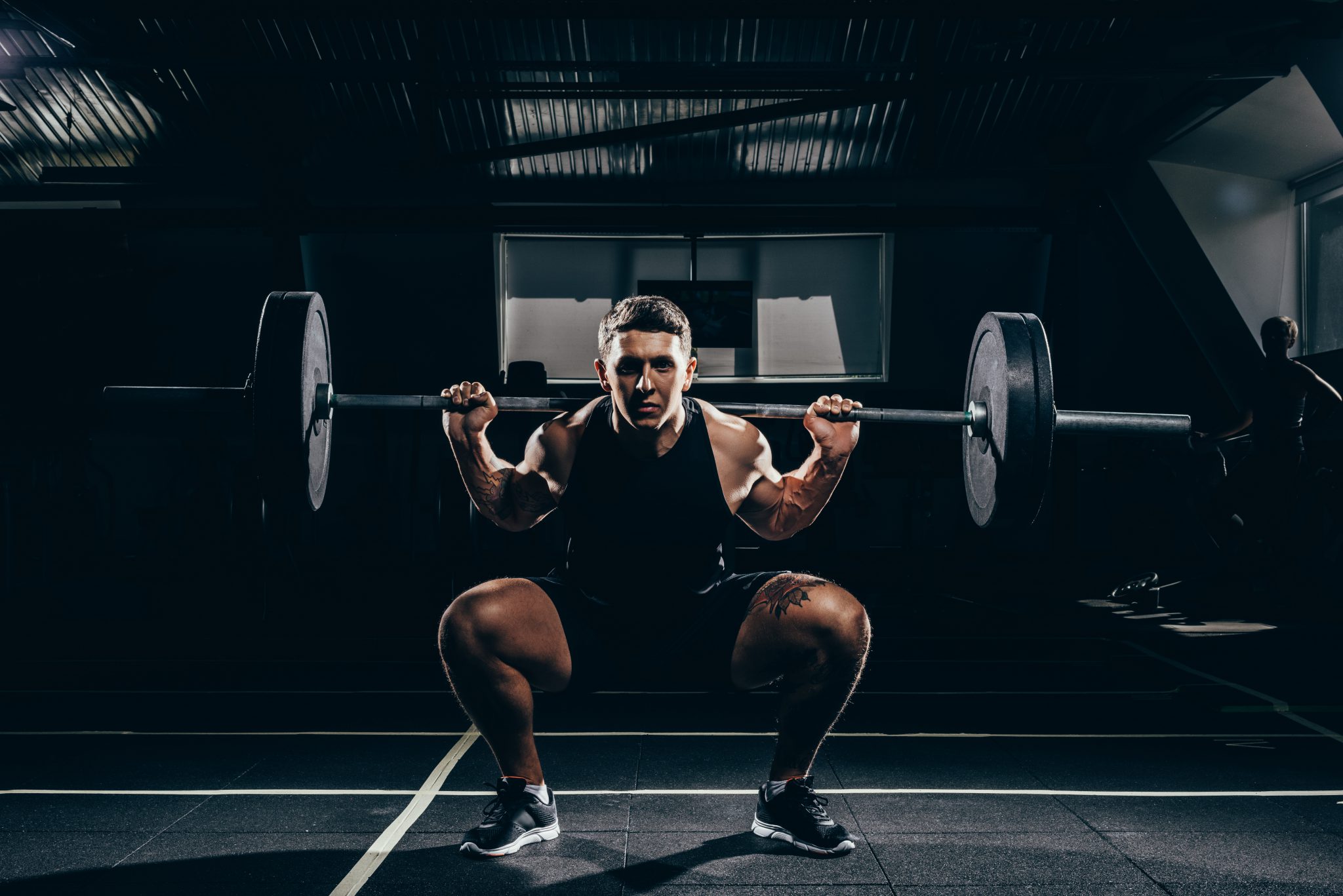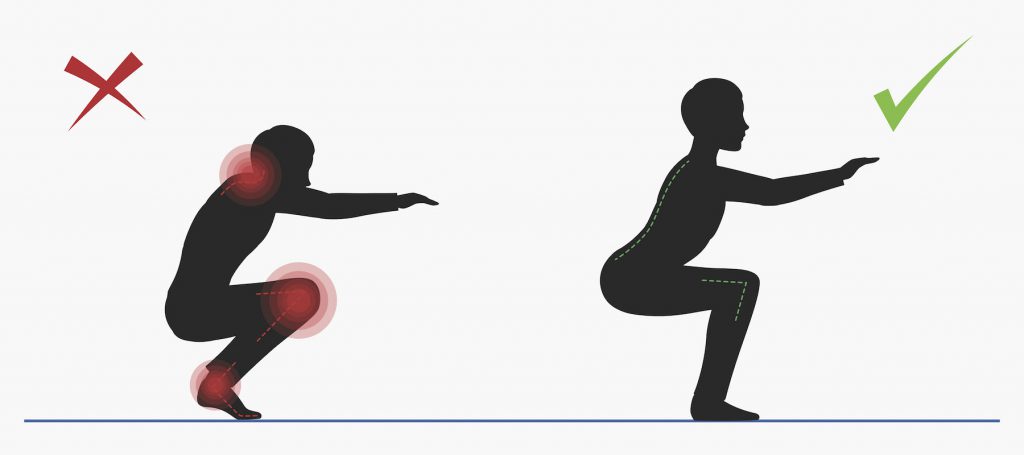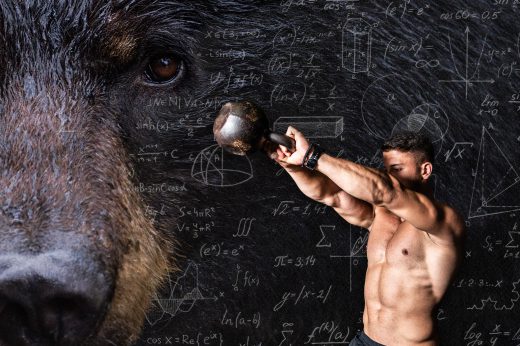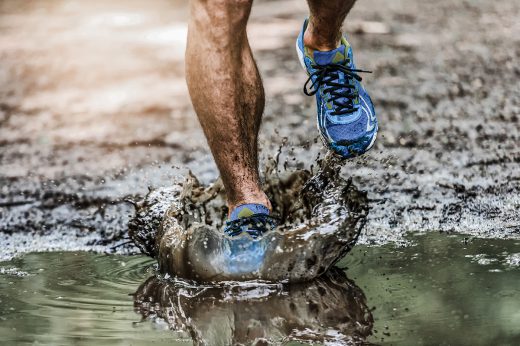Squats should be simple — even toddlers can get deep into a squat. The reality is that technically squats can be incredibly complex. What seems like a simple movement requires a number of joints, tendons, ligaments, and muscles to operate in concert while balancing a load.
These are the same demands required by a litany of outdoor activities, too. Skiing, surfing, kiteboarding, rock climbing, backpacking, and hiking all work the legs in similar fashion. When performed correctly, the squat is maybe the best overall exercise for these and other outdoor adventures. But you have to do them correctly. So, here are three basic squat variations that will make you stronger for a life outdoors.
Back Squat
Benefits: hypertrophy, lower body power and strength
When most people picture a squat, this is the variation that comes to mind. It is widely considered the king of strength training for its ability to add strength and size to your lower body.
While the back squat trains the entire musculature of the lower body, the position of the barbell works to emphasize the posterior chain, so your glutes, hamstrings, and spinal erectors will be performing the lion’s share of the work. Remember: You should be able to comfortably perform a full-depth bodyweight squat prior to loading up with the back squat. This will ensure you use proper form when under a load and reduce the risk of injury.
Cues: Step up to the barbell and position your hands slightly wider than shoulder width. Step under the bar and place it across your upper back making a shelf with your traps. Keeping your shoulder blades pulled together will ensure the shelf remains in place for the duration of the lift.
Step back and place your feet in your preferred position. The most powerful position is with your heels below your hips, but preference and anatomy might dictate a wider stance. Where you are comfortable is most important, but I would caution against going wider than shoulder width apart. The toes of each foot should splay out slightly. Initiate the movement by pushing your hips backward and down — imagine you are sitting back into a chair. The key is keeping your torso braced and not allowing the weight to lean you forward. When the crease of your hip drops below the level of your knee you have reached full depth and you should forcefully return yourself to a standing position. Notice I emphasized hip crease below the knee, which is considered a full squat; anything where the thighs are parallel or above is considered a half or quarter squat.
Front Squat
Benefits: balanced leg strength, core stability and strength, upper back strength
Thanks to CrossFit, the front squat has seen a resurgence in recent years. A key component of Olympic weightlifting, the front squat changes the position of the load and thus the emphasis on the body. The weight is held across the torso at shoulder level. By placing the weight in front of the hips, you make the quadriceps become the focus. Additionally, in order to maintain the position of the bar, the upper back is performing major work in stabilizing and maintaining proper position. Don’t be put off; the glutes and hamstrings are still major players here, just with less emphasis than in the back squat.
If you are looking to change things up or want to make sure your core is pulling its weight, adding the front squat to your training plan can yield huge benefits. It is important to note that the limiting factor in regard to loading here is almost always maintaining the weight in front of your shoulders.
Cues: Approach the bar and place your hands slightly wider than your shoulders. Swing your elbows under the bar until your forearms are parallel to the ground; this creates the shelf where the bar remains throughout the lift.
Maintaining upward pressure with your elbows is key to not dropping the weight. Initiation and completion of the squat is the same as the back squat above. A little trick to re-racking the weight is to maintain your vision forward and walk until you feel the bar contact the rack. If you try and look for each safety rack, you will often swing one side out, which can be dangerous.
Overhead Squat
Benefits: balance, muscular control, core and upper back strength, shoulder mobility and stability
Another squat variation popularized by CrossFit, the overhead squat has its roots in Olympic weightlifting. Even if you aren’t looking to enter the next US Open, the overhead squat can be an incredibly effective way of training coordination between your upper and lower body while simultaneously increasing mobility.
Overhead squats should not be underestimated. The challenge here is maintaining the overhead position. Again, the limiting factor is not the legs, but in maintaining the weight over your head throughout the movement. I highly encourage you to practice with a broomstick at home before attempting this in the gym under a load. Many experienced lifters lack the upper body mobility and stability to correctly perform the overhead squat with anything approaching a maximal load.
Cues: With a hand position wider than shoulder width, press the weight overhead. Alternatively, some racks allow you to set the weight to the correct height in which case you can approach the bar and step back as before. Once the weight is stable overhead, assume a slightly wider than average squat stance. For most people this is somewhere between hip and shoulder width. Execute a squat in the same manner as the back squat above.
You will likely find that the weights required for you to properly execute this movement are much lower than those you use for your back squat. Remember the emphasis is not to truly challenge your legs but to force your body to work as a unit and move with a load that is placed in a disadvantageous position.
Why use these variations?
These three squat variations, when performed correctly, will boost your baseline strength levels and provide the solid foundation of body mechanics necessary for more complex exercises and movements. It is important to ensure you are utilizing proper form and achieving proper depth before moving onto heavy loads and more complex squat variations.
If you want to get better at squats, practice, practice, practice, and practice more. Test yourself by lowering the weights and working through tempo or pause repetitions, which can help achieve proper depth and mechanics. Without mastering these seemingly simple movements, it becomes impossible to push your fitness goals to the limit.









Comments